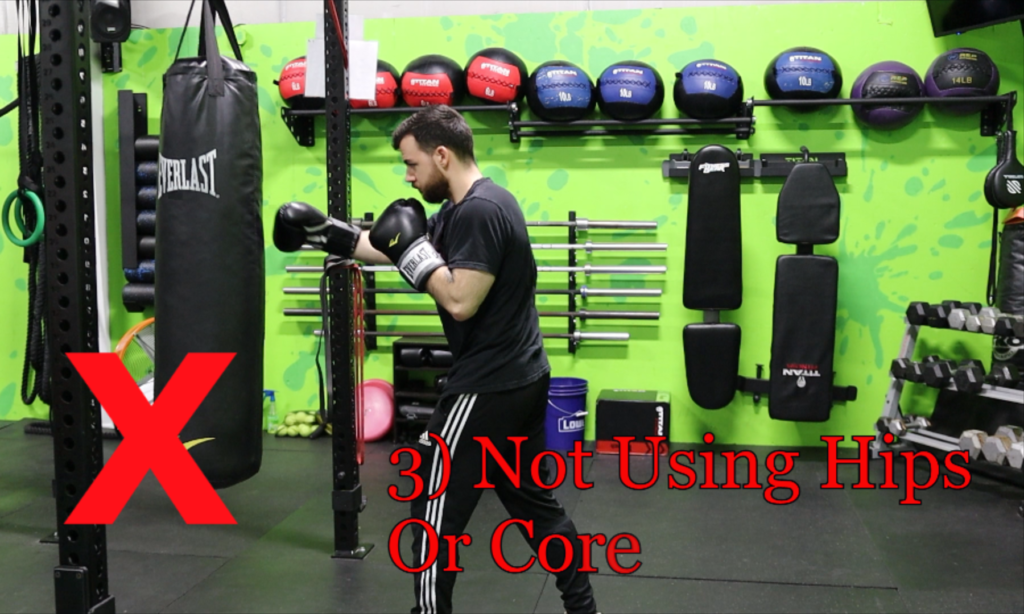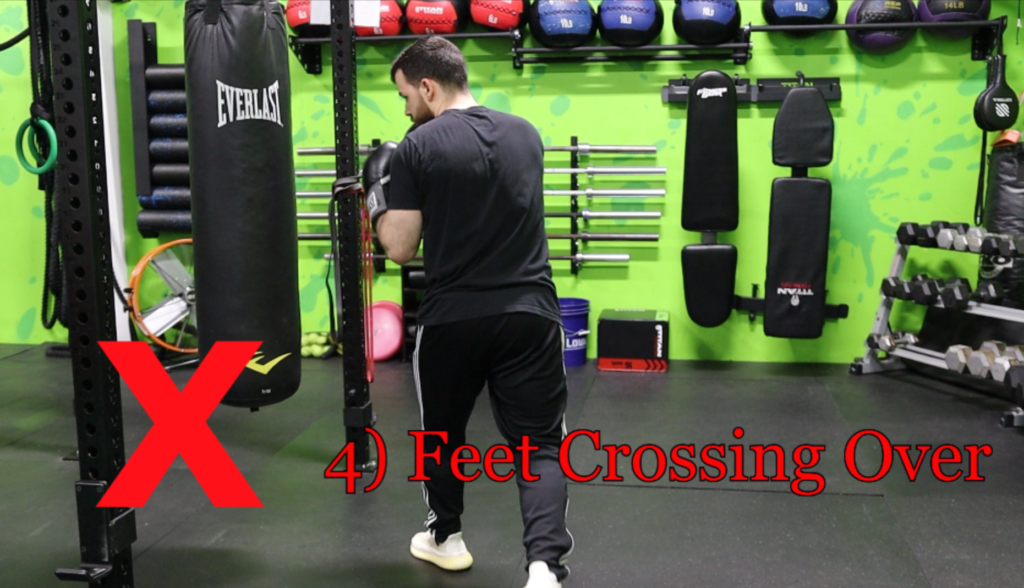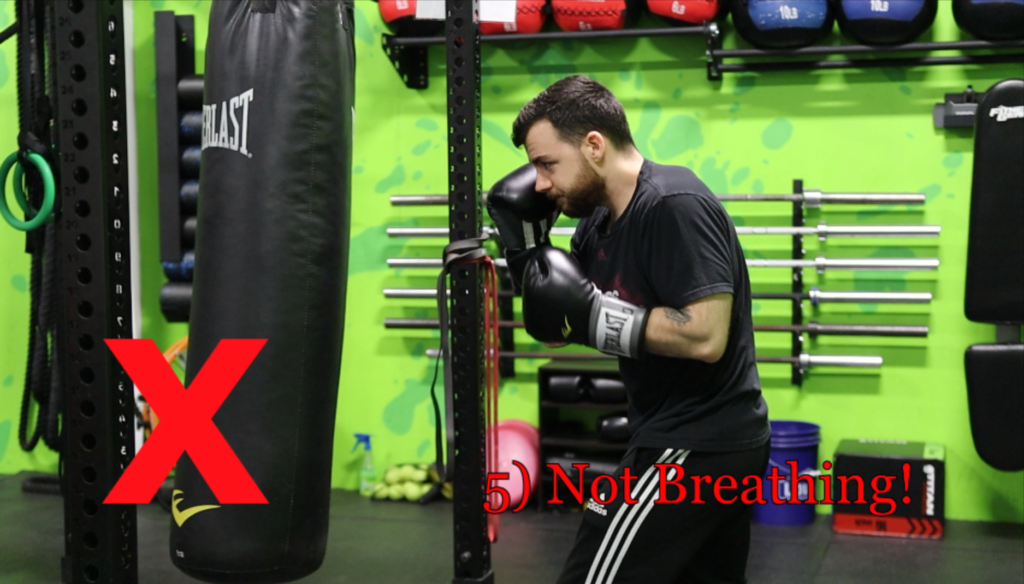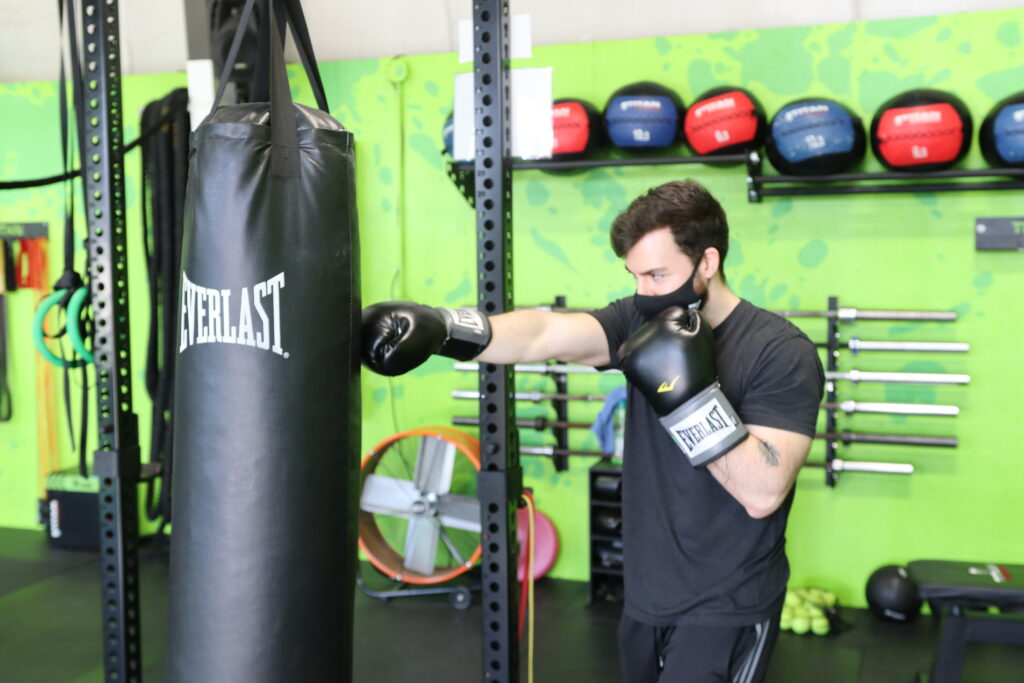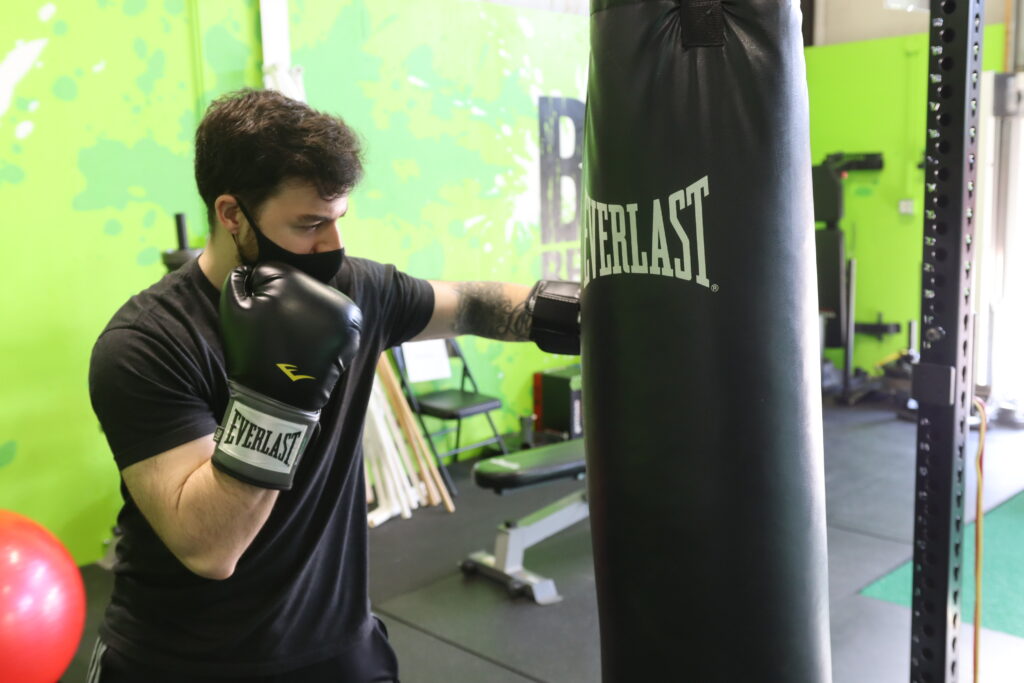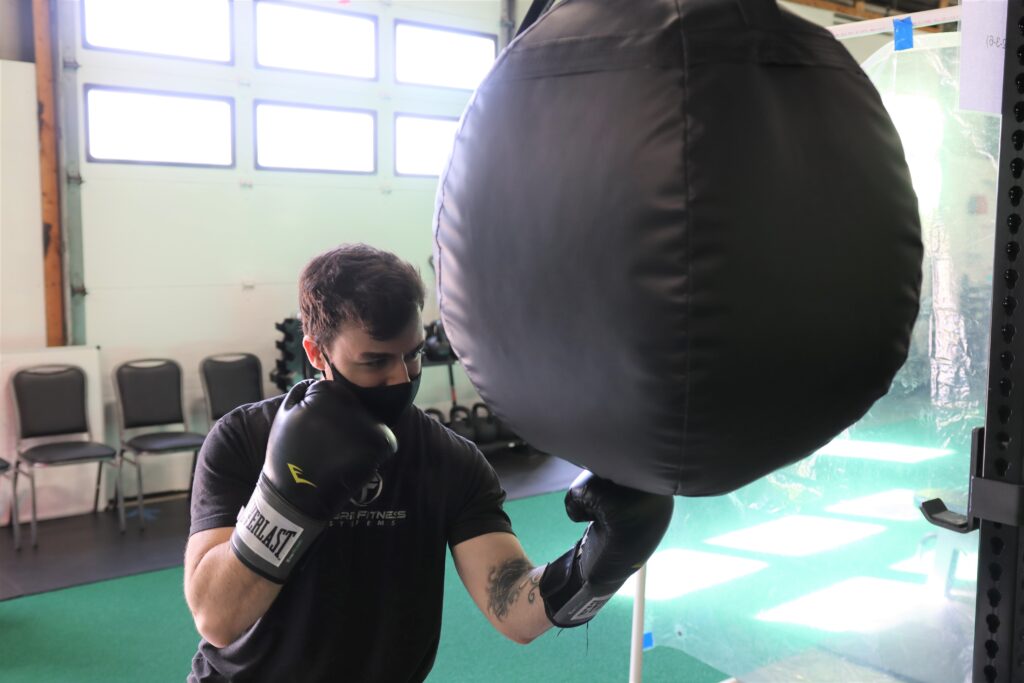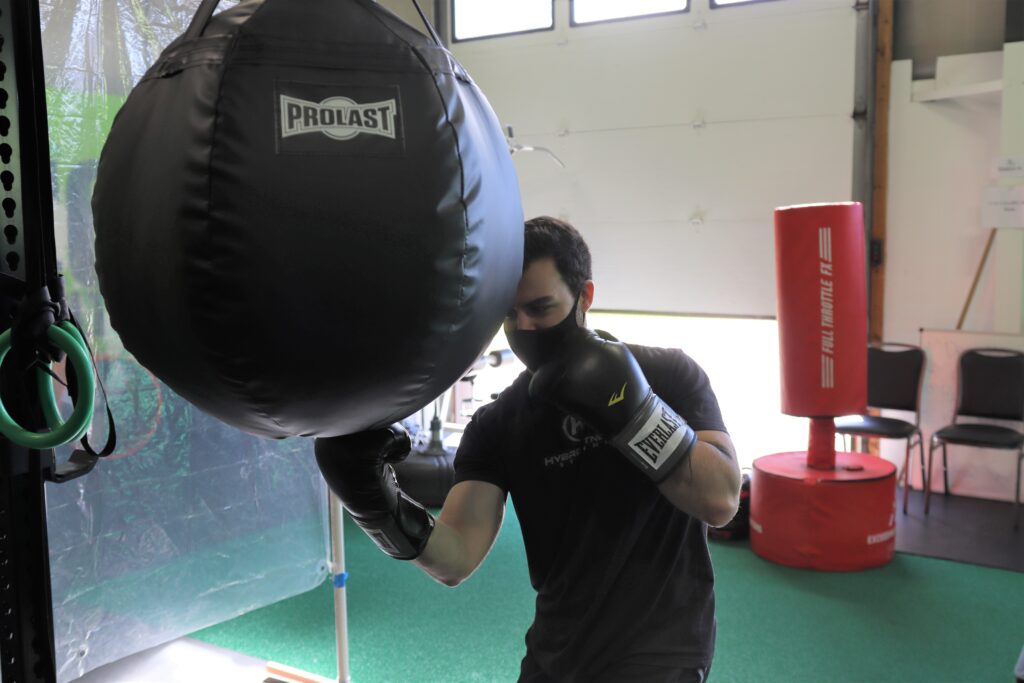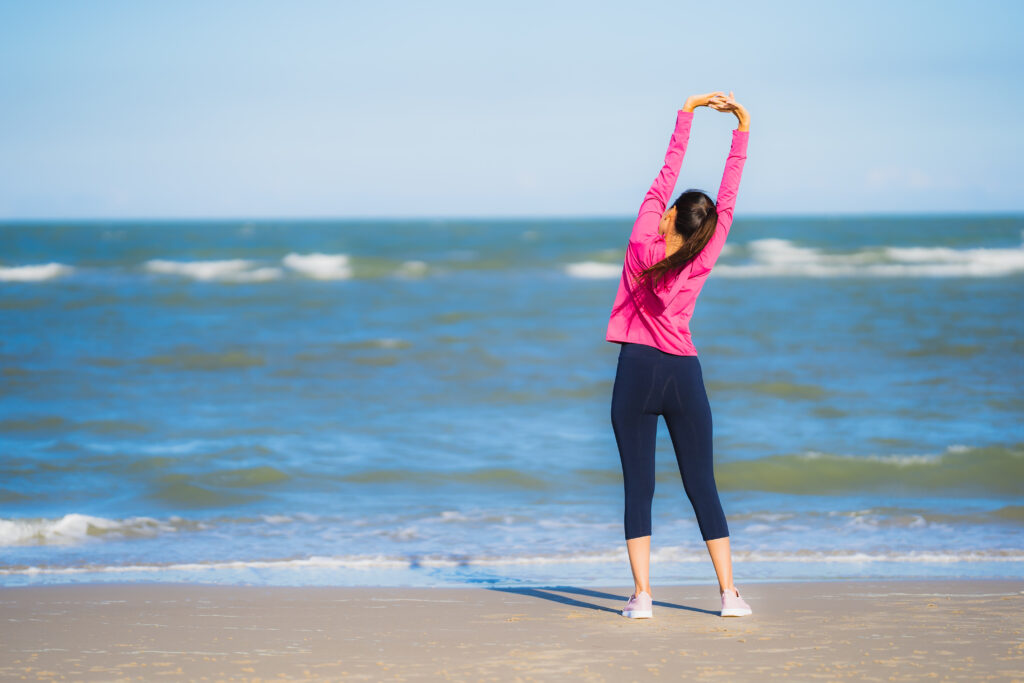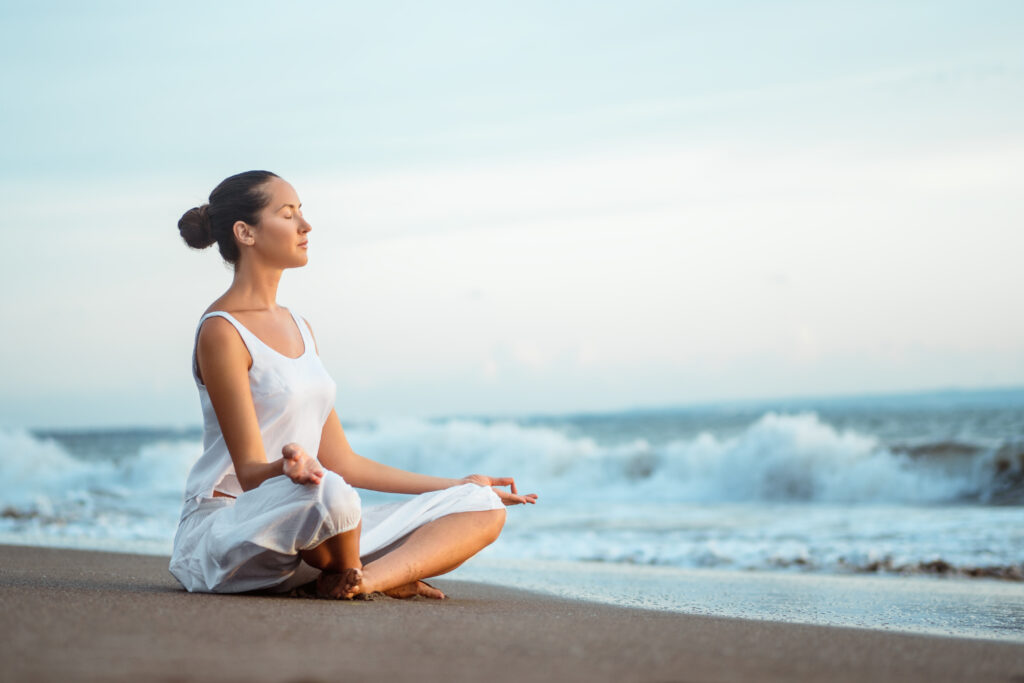August 18, 2023
Ink, Steps, and Salads: My Summer Shred Odyssey
Summer Shred Chronicles: Unveiling Triumphs, Revelations, and Veggie Victories
Greetings fellow seekers of health and vitality,
As the sun sets on my Summer Shred journey, I stand before you with tales of transformation and unexpected insights. What was meant to be a six-week endeavor took an unexpected twist, as the call of vacation interrupted my pursuit. But fear not, for in these pages, you’ll find a tapestry woven from my revelations and discoveries, and perhaps a dash of inspiration for your own odyssey.
Defying Conventions: A Manual Revolution
In the realm of nutrition, I have wandered through the digital landscape of apps, but it was the tactile dance of pen and paper that truly illuminated my path. Five weeks of manual calculations trumped months of tapping away on screens. If you find solace in the embrace of an app, rejoice! Yet, if your journey lacks luster, a guide to transcend tracking challenges awaits at [ltracking blog post].
A Countdown Cut Short: Vacation Beckons
The siren song of vacation called me away a week early, a decision tinged with both excitement and a hint of regret. In those final moments before departure, I penned words that spoke of goals unfinished. But little did I know that this unplanned pause would lead to profound revelations.
Numbers, Nutrients, and a Dash of Adventure
As the curtain fell on this chapter, the ledger of my efforts revealed some astonishing truths:
- Counting in Grams: The Magic of Simplicity In the mosaic of dietary choices, counting grams emerged as my guiding star. This simple method illuminated a path toward culinary balance, allowing indulgence without veering off course.
- Portion Liberation: Beyond Serving Size Shackles Armed with newfound knowledge, I breached the confines of packaged portions. The universe of calories bent at my will, granting permission to savor more while staying within bounds.
- Numbers and the Nurtured Self: A Reckoning In the end, my journey was measured not just by pounds shed but by the reclamation of self-discipline. 3.9lbs and 1.1% body fat are mere tokens of an enriched spirit.
- Ego’s Retreat: Consistency and Caloric Quests With humility as my compass, I navigated daily caloric waters, some days making a triumphant splash, others a gentle ripple. A journey fueled not by ego but by intention.
A New Challenge Ignites: Steps and Veggie Expeditions
The end of one voyage heralded the dawn of another, where steps and vegetables took center stage:
- Wanderlust and Steps: A Kinship Discovered Amidst vacation’s embrace, the pursuit of 10,000 steps wove seamlessly into my explorations. Museums, cities, and landscapes unfurled beneath my feet, whispering tales of discovery.
- Vegetable Sojourns: A Culinary Expedition Amidst gastronomic adventures, vegetables unveiled their splendor. A Spiedie’s Salad from central New York state stole my heart, proving that health and delight can coexist.
- Collective Wisdom: Caloric Unity As a group, we embarked on the art of sharing, slicing through old habits with unity. Our alliance not only preserved calories but also forged bonds of camaraderie.
Vacation’s Aftermath: Triumphs Amidst Exploration
Upon the return from my vacation reverie, the scale sang a different tune, but setbacks were merely stepping stones:
- Weight’s Fluctuations: A Return and Recompense A six-pound whisper greeted my initial return, yet within a week, five pounds surrendered to the will of intention. Guided by mindful choices, the path to equilibrium lay clear.
- Vegetable Revelations: A Symphony of Nourishment In the embrace of verdant nourishment, my body resonated with vitality. Unearthed wisdom whispered that it’s not just about sustenance but also a symphony of well-being.
- Step by Step Resilience: Lessons in Motion Amidst the challenge of 10,000 steps, I uncovered the art of desk-bound movement. Knees, once prisoners of pain, embraced the rhythm, birthing a dance of resilience.
Challenges as Catalysts: The Journey Continues
In the aftermath of these trials, my notebook is filled with wisdom:
- Vegetable Epiphany: A Garden of Delights Veggies ignited not just my palate but also a wellspring of vitality. As I listened to my body, the symphony of well-being reached crescendo.
- Stride by Stride: Footfalls of Empowerment Steps, once a numerical conquest, became a dance of empowerment. With allies at my side, the finish line stood not as a challenge but as an invitation to greatness.
- Workstation Revelations: A Desk’s Dual Purpose The hum of the desk transformed into a rhythm of motion. Strides replaced stillness, weaving a story of metamorphosis.
- A Symphony of Graceful Movement: Lessons in Kinetics Mobility emerged as the key to a pain-free stride. Each step became an act of grace, painting the canvas of days with hues of vitality.
- Challenges: A Kaleidoscope of Growth In the crucible of challenges, I discovered not just hurdles but landscapes of growth. Each conquest whispered encouragement, painting the journey in hues of joy.
Epilogue: The Odyssey Continues
As this chapter folds, the story is far from over. The echoes of my journey linger in every step and every leafy embrace. The challenges, revelations, and triumphs become stepping stones towards a brighter horizon. And so, fellow travelers, let us embrace this uncharted terrain with open hearts and eager strides.
In health and adventure, Royan

After two years of contemplation, Royan walked through Hybrid’s doors in 2018. Even though she was battling cancer & a slipped disk, walking through that door to ask for help was the hardest thing she had ever done. The Hybrid team of coaches took it from there and the rest is history! Royan is now a Hybrid member as well as a team member, supporting Hunter and Dusty and all of the coaches as needed.
July 7, 2023
Hybrid’s Muddy Princesses 2023!
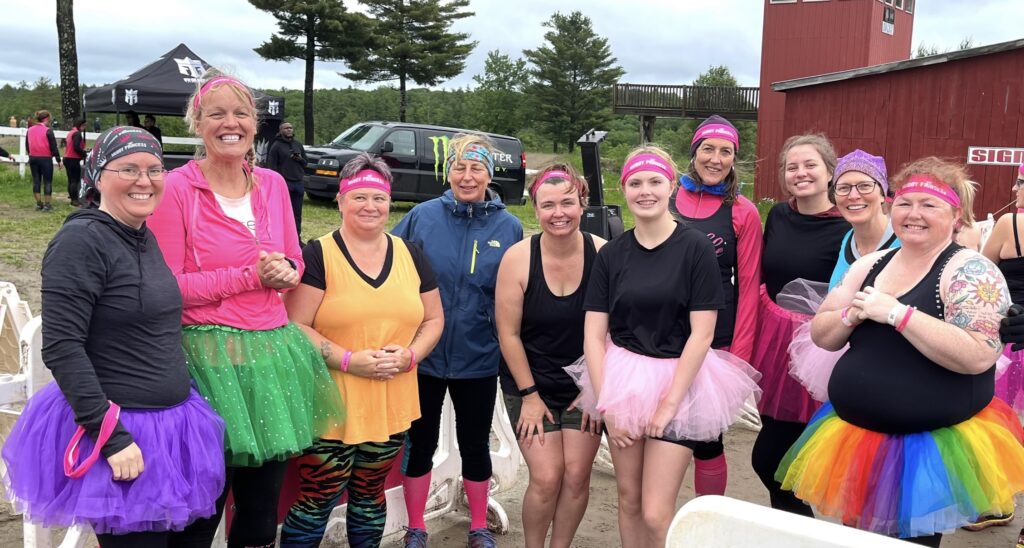
Coach Cathy is here to say that Hybrid Fitness has some hearty souls who participated in the Muddy Princess in Minot, Maine on Father’s Day.
Here’s a shout-out to Hybrid members Tabitha Fillion, Amy Mitchell, Shannon Burns, and Coach Cathy!

Tabitha got the ball rolling by creating a team, Rack Attack. She signed on three of her besties and anyone looking to get muddy. Shannon and I each brought our daughters, and another friend of Amy’s and Cathy’s, also named Amy, jumped on board for some slippery fun in the mud.
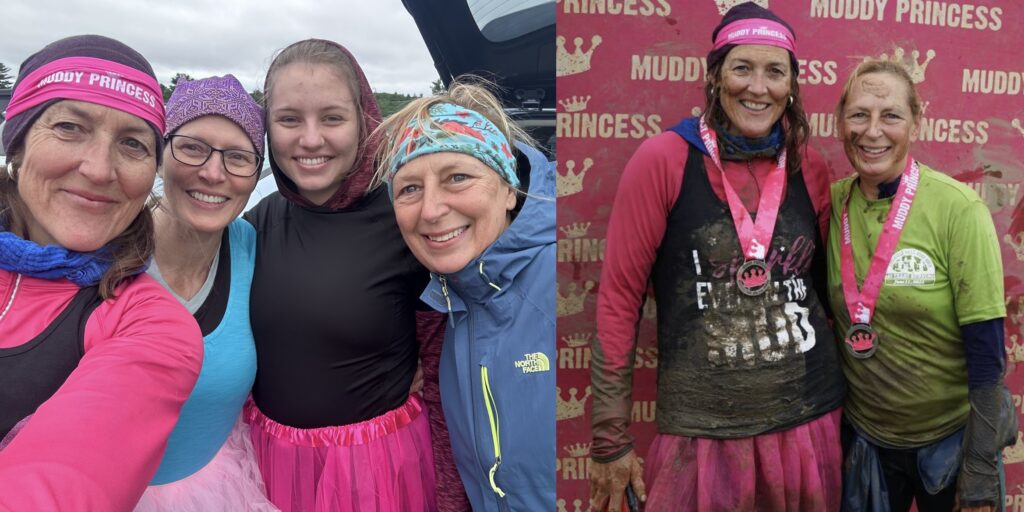
What’s the Muddy Princess, you ask? The organization partners with the National Breast Cancer Foundation (NBCF) for mud courses nationwide. The NBCF aims to fill the gaps in cancer care by ensuring every woman has access to the information she needs. Some of you may not know that I went through breast cancer in 2018. I know this hits home for many people who have experienced it themselves or through the journey of a loved one.
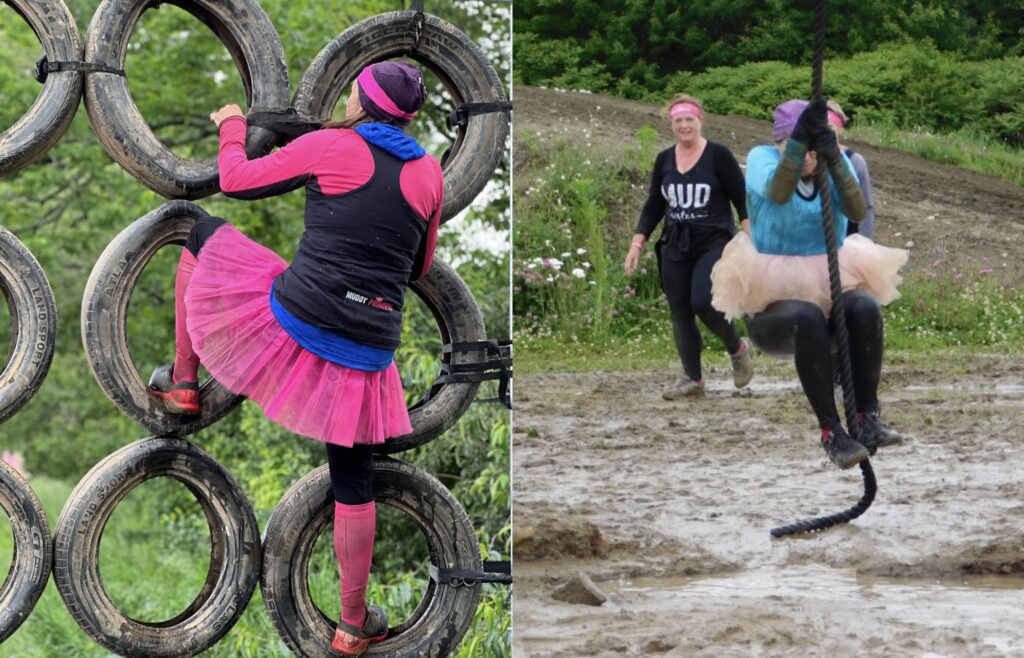
Women of all sizes, ages, and fitness levels from 7 years old and up can enter the Muddy Princess. Participants can run, jog, skip, walk, and sometimes crawl the course. It is not a race, but 100% fun and teamwork.
Participants can skip any obstacle because it’s a completely judgment-free zone. What could be better than that?

Scattered along the course are 18+ obstacles. Some highlights are traversing muddy pools, climbing walls of tires, swinging over mud pits on ropes, sliding slides into muddy water, crawling under or over barriers, and getting soaked in pink bubbles. On average, participants take two hours to cross the finish line. It’s uninhibited child mud pie-making with your favorite gals.
We had a great time and cannot wait to be muddy again next year. Who’s in? 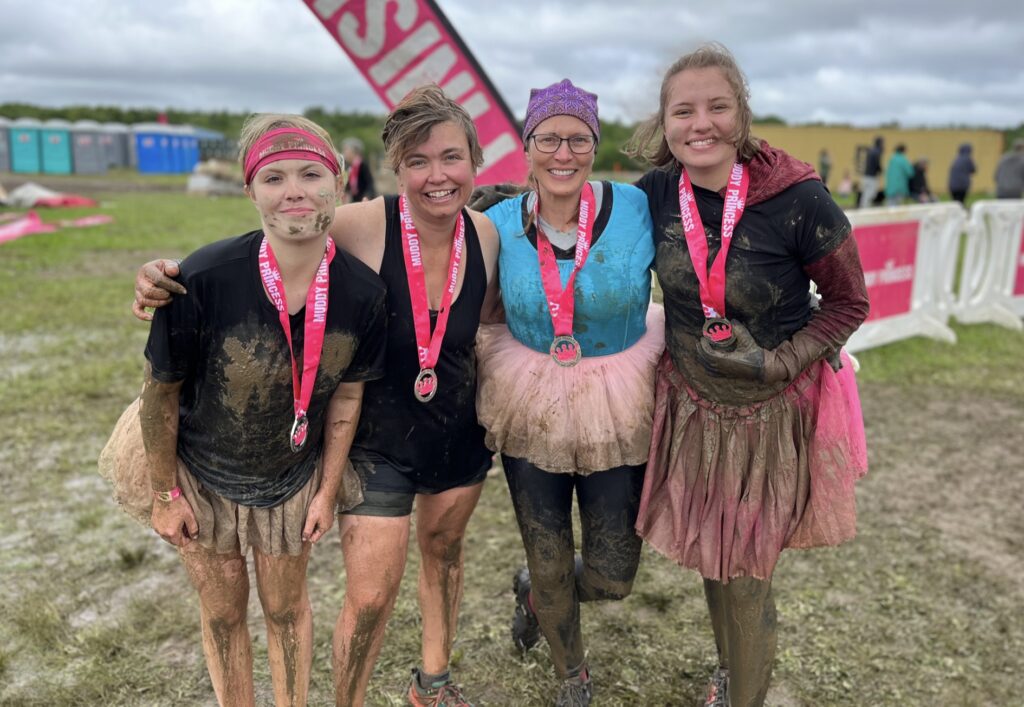
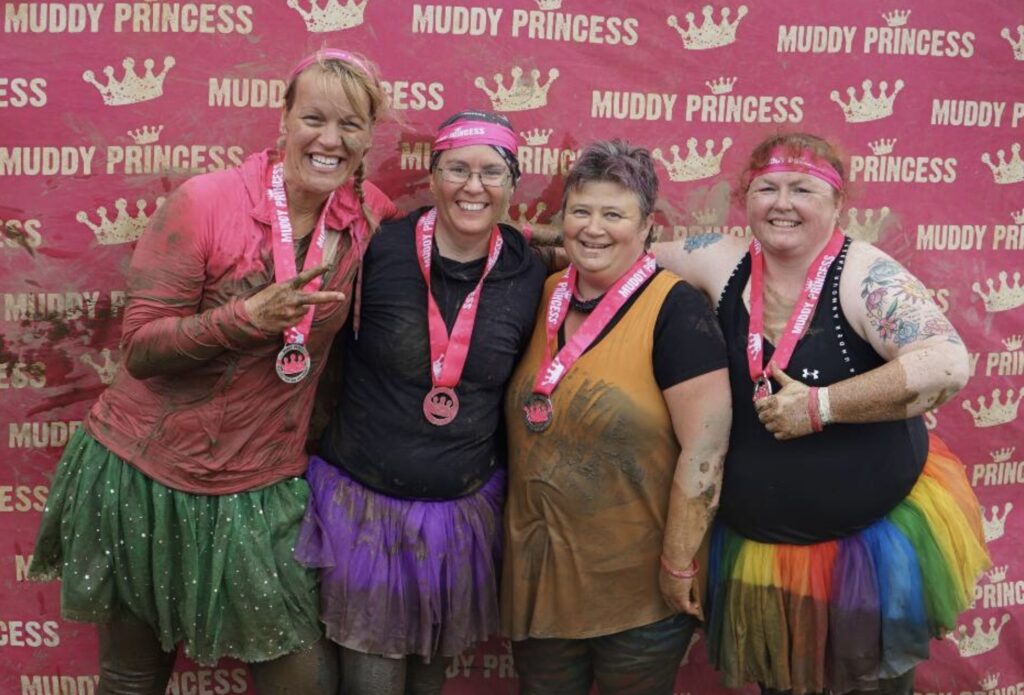

Cathy grew up in NH surrounded by a large, loving family, where she learned generosity and hard work. She now models that for her two children. She was inspired to become a fitness coach when searching for ways to become more healthy herself after a life-threatening illness.
March 23, 2023
Coach Brandon Pictures from Egypt
I recently took a trip to Egypt & have a few pictures & thoughts to share.

The Great Pyramids of Giza. The Pyramid of Khefru (481ft) was the tallest structure on Earth from the time of its completion around 2,500BC until the construction of the Eiffel Tower in 1887! Since I was a small child I have been amazed by these pyramids. After seeing them in person I am somehow even more blown away by them than ever before.

The Great Pyramids with the Sphinx in front. The Sphinx has been dated back to around the time of the construction of the Pyramids but new research is showing it potentially could be much older and predate the Pyramids by up to a couple thousand years!
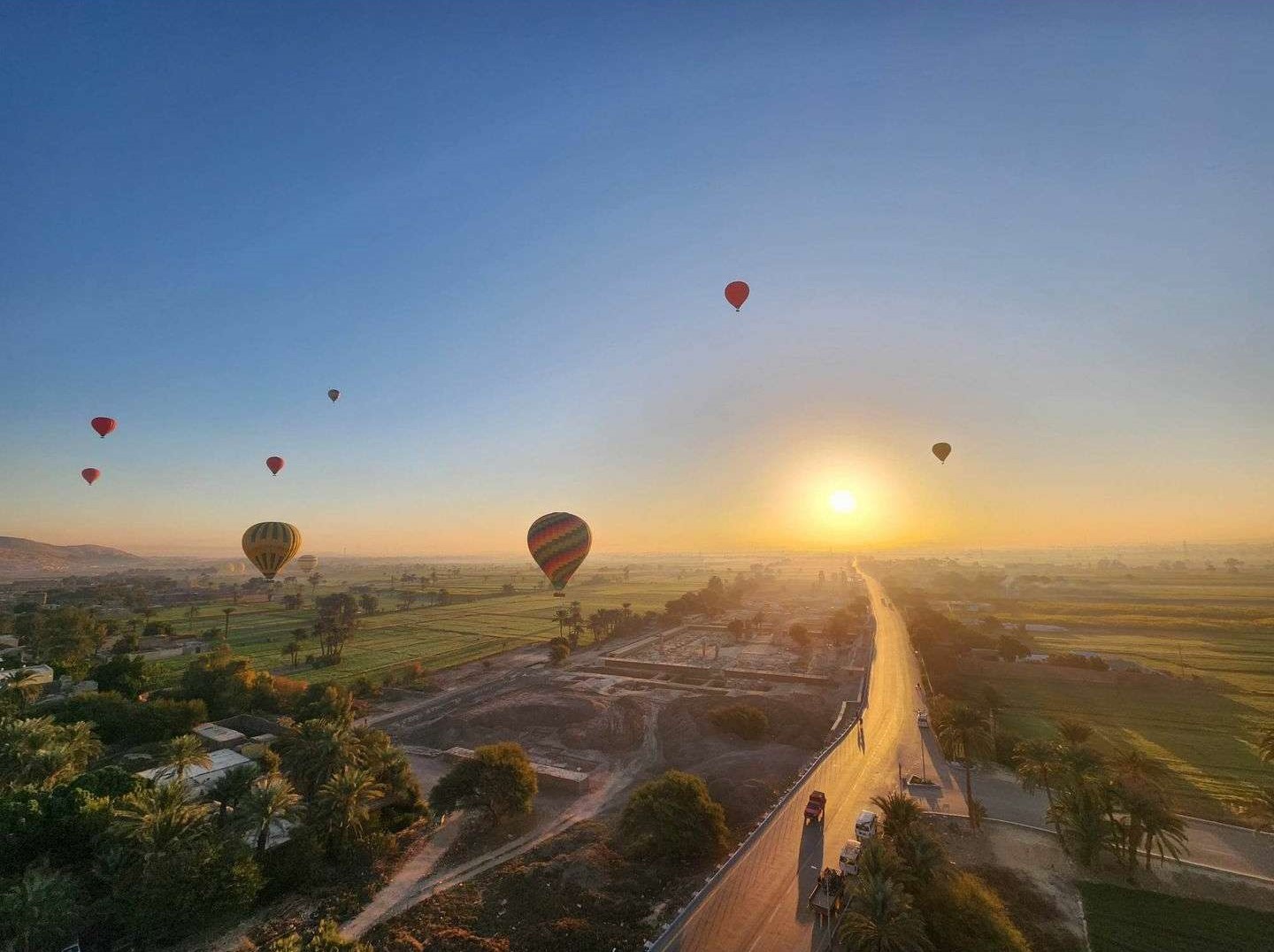
One of our earlier mornings. A sunrise hot air balloon ride over the farmlands of Luxor. Luxor was once called Thebes and was the first ever capital of ancient Egypt. Definitely a unique and wonderful thing to experience.


Temple of Hatshepsut. Built sometime between 1,500-1,400 BC.

This temple was built for a Pharoah with a very interesting story of how she gained and kept her rule by sending her stepson (the rightful heir to the throne) to Sudan. She ruled for multiple decades after. After she passed away her stepson came back to Egypt and destroyed many of her statues and temples as to try and not let history remember her. He failed, as Queen Hatshepsut was loved by most people she ruled over.
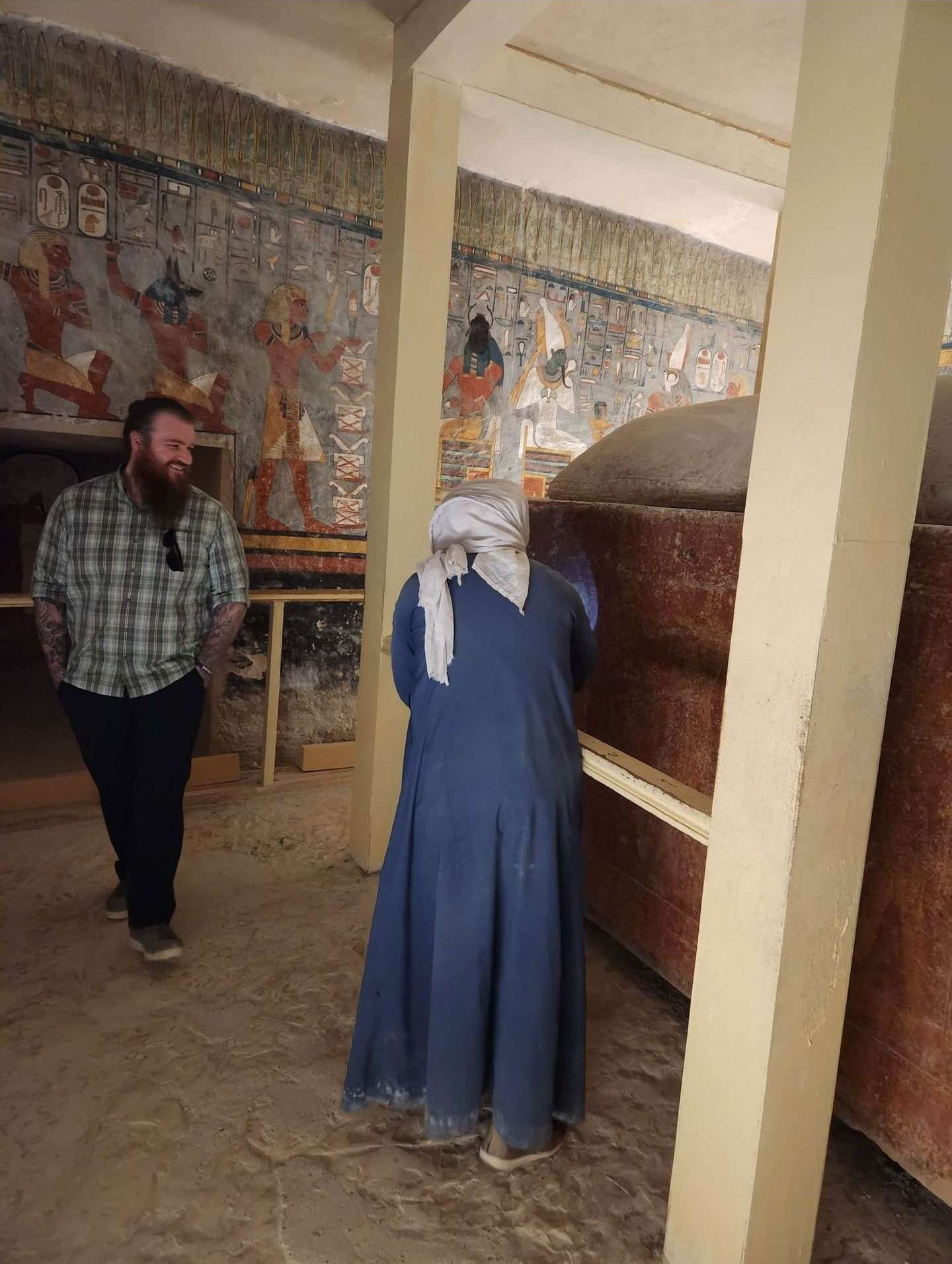
Inside one of the tombs at the Valley of the Kings. Around 1,600BC kings stopped building pyramids and started building chambers in the caves and cliffs of Thebes in an attempt to keep grave robbers out.

The pictures in this tomb are approximately around 3,300 years old but have kept the paint incredibly well due to being buried for so long.

I personally did not have high expectations for the Valley of the Kings but left Egypt with it being one of my favorite stops we had.
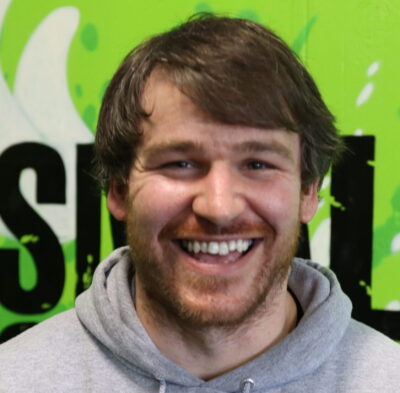
Brandon started working out as an athlete in high school, striving to push his limits and reach his full athletic potential. As he spent more and more time working on his own goals, he found a passion in the science of strength & conditioning, and using that new-found knowledge to help others. Brandon is exceptional at giving his clients the extra push to get stronger in a safe manner, while going above and beyond to making sure they feel comfortable and safe.
March 2, 2023
Cheeto Fingers will be just one chapter of my life story
Growing up, my Dad worked for the Frito Lay Company…
Which meant that we would have boxes and boxes of the stales (product that had gone beyond expiration date) in our garage at home.
Whatever chip flavor you could imagine, there was an unlimited supply within a few steps from my kitchen.
And sometimes… every couple of months… we’d even get the leftover bags of beef jerky.
What a treat.
I remember playing video games all day in the summer, and sprinting into the garage in between games to grab my next bag of choice, pebbles stuck to the bottoms of my feet because I couldn’t take the time to even slide crocs on.
Often, that bag of choice was Cheetos.
This was when I learned about the irreversible damage Cheeto dust can do.
Not only does it stick to your fingers, but it’s a magnet to everything you touch, including your Xbox controller.
Some lessons you have to learn the hard way, I suppose.
In this story, one might describe me as a Junk food eater… a Video Game nerd, perhaps?
Call me what you want, this story isn’t a fair representation of who I am today.
And it certainly doesn’t dictate my actions today.
I say this because…you may have a story you remember.
Maybe it replays in your head quite often.
A story from long ago, or maybe more recently.
Know that that story doesn’t define who you are today.
Every day you have a decision. A fresh start.
To decide what actions you will take today.
And who you will become.
Who you are.
And you don’t have to feel guilty for those old stories.
They are a old chapter in a book you are still writing.
Chose to be 1% better today, whatever that may be for you.
And look back on those chapters, proud…
proud because of how far you’ve come.
So, what story will you write today?
Love,
Coach Hunter
#SmallStepsBigResults

Hunter grew up using fitness as a way to boost his low self-esteem. This led him to later found Hybrid Fitness in 2014, where him and his team create a fun, safe training environment for busy adults looking to better their health without doing crazy crash diets or excessive burpees.
February 15, 2023
Mr Watson, come here, I want to see you
Perhaps, we should take a different look at changing our behaviors. What if we look at it like a designer? What if we think in design iterations?
Let’s take the telephone as an example. The first telephone didn’t look at all like the telephones we carry around today. You sat at it. It had a huge drum like thing, a needle & wires. What if, after that first iteration, designers gave up. What if they said ‘it’s been a month, that’s the best we’ll get’ or ‘I can’t do any better, this is how the telephone will always be’.
If that’s too much to imagine, imagine still only having the first generation iphone from 2007. What if Apple said ‘that’s it, we’ve done enough. That’s the best it’ll be. Enjoy your iphone.’
That would be CRAZY!
We wouldn’t have wireless phones capable of running businesses, taking pictures, playing music, making phone calls, keeping schedules, assisting with tasks, translating, providing directions, reviews, social contact, …. The list goes on and on and the capabilities are increasing with every iteration.
I hope there’s an aha moment here for you…. What if you start thinking of your life and your behavior change as something to be designed? Something to be worked on, tested, improved upon? If something doesn’t work, it’s back to the drawing board to make a tweak versus throwing up your hands and completely giving up!
When you start to think in baby step iterations, guess what? Your thoughts of failing fade away because it is no longer black and white (success or failure). Now you’re thinking like a designer… ‘we want this, what steps can we take to do it?… ‘we’re here & we want this better. what can we do to get this better?’ ‘Ah, that didn’t work…. What else can we do to get this better?….’ There are no failures unless we stop trying. There are just iteration improvements; like going from one iphone version to the next!
I encourage you to start thinking of your health journey like a designer! Our coaches here at Hybrid are ready with many tools to help you design your way to your health goals!

After two years of contemplation, Royan walked through Hybrid’s doors in 2018. Even though she was battling cancer & a slipped disk, walking through that door to ask for help was the hardest thing she had ever done. The Hybrid team of coaches took it from there and the rest is history! Royan is now a Hybrid member as well as a team member, supporting Hunter and Dusty and all of the coaches as needed.
January 24, 2023
Coach Cathy’s trek in Nepal!
Many of you know that I tackled the Khumbu Valley Trail in Nepal in December. What you may not know is that I am NOT a hiker. That said, I tend to trek only big stuff. Wait, what? I know that does not make sense. It started years ago when I lived in Colorado. With some friends, I conquered Longs Peak, a fourteener in the Rocky Mountains, without much preparation. I triumphed all the same.
I renewed my lack of hiking preparation in the fall of 2021 when I set out for a two-week adventure of a lifetime. I was officially in my fifties and felt there was no time like the present to push my boundaries and step outside of my comfort zone. You know, physical exertion, mental mind-bending, temperature changes, in-your-face nature, potentially dangerous and suspicious food, and anything that makes you wonder later why you agreed to be that uncomfortable in every way.
I was hesitant, to say the least because I was about to hike 26 miles to get to Machu Picchu in Peru. When I say I do not hike, I do not step outside my door on weekends with my hiking boots laced up to huff and puff to the top of anything. I live at sea level in a beautiful place with many easily accessible hiking spots, but I don’t hike. No excuses. I sort of like hiking. I mean, I like the idea of hiking. I do not go out of my way to make it happen or prepare in any way for it.
 What do you do when you are about to push your limits? You lean on a friend, right? Surround yourself with support and inspiration, which is one of the things I love about Hybrid Fitness. For this experience, one of my grade school besties, Tammy, was joining me. Tam is the epitome of a spirited go-getter. Just what I needed! After 45 years, Tam knows me inside and out and has my back. However, she hikes. Like real hiking. Like all-the-mountains-in-New-England-every-weekend hiking. Compared to my apprehension, she was beyond ecstatic about this adventure.
What do you do when you are about to push your limits? You lean on a friend, right? Surround yourself with support and inspiration, which is one of the things I love about Hybrid Fitness. For this experience, one of my grade school besties, Tammy, was joining me. Tam is the epitome of a spirited go-getter. Just what I needed! After 45 years, Tam knows me inside and out and has my back. However, she hikes. Like real hiking. Like all-the-mountains-in-New-England-every-weekend hiking. Compared to my apprehension, she was beyond ecstatic about this adventure.
I love to travel and have been all over the world. As I get older, I am less willing to suffer for the experience. I envisioned myself trudging along, far behind Tam. That is if I wasn’t sitting on rocks or the wet ground, gasping for breath and sobbing periodically. I pictured arriving at our camp as a sweaty, hungry, dehydrated mess. And in the morning, being so sore, I’d have to stay on the mountain forever to live in harmony with the local alpacas.
 I am a Hybrid Fitness Coach. Coach is the keyword. I help others get the exercise they need, but there are more times than I care to admit when I don’t get the workouts I need. I haven’t been as consistent with my exercise schedule as I want. My nutrition is inadequate because I tend to have too many irons in the fire, and I skip meals. In my mind, this behavioral trend is a recipe for disaster. Not knowing what I had signed up for with this moderate-level Sacred Valley Peruvian quest, I questioned whether I was fit enough to check this off the bucket list. Summiting the top of Longs Peak was almost 25 years ago when my aches and pains were less, and my muscles were a hell of a lot more primed.
I am a Hybrid Fitness Coach. Coach is the keyword. I help others get the exercise they need, but there are more times than I care to admit when I don’t get the workouts I need. I haven’t been as consistent with my exercise schedule as I want. My nutrition is inadequate because I tend to have too many irons in the fire, and I skip meals. In my mind, this behavioral trend is a recipe for disaster. Not knowing what I had signed up for with this moderate-level Sacred Valley Peruvian quest, I questioned whether I was fit enough to check this off the bucket list. Summiting the top of Longs Peak was almost 25 years ago when my aches and pains were less, and my muscles were a hell of a lot more primed.
I had not been backcountry tent camping since b.k. (before kids). I was worried about my back after lying on the ground all night. I imagined tripping on the rock-strewn jaunt to the makeshift potty in the middle of the night in the blackest darkness. The temperature was a concern because I could only carry so much in my pack. Freezing after sweating from the exertion in the cold weather had me thinking there could be a possibility of never being warm again. I had no idea what the food and drink would be like, including coca leaf tea, sacred to the Incas, which has enough caffeine to shame Coach Brandon and Coach Ben. I purposely did not ponder the chances for any up close and personal conversations with unexpected critters as we intruded into their habitat.
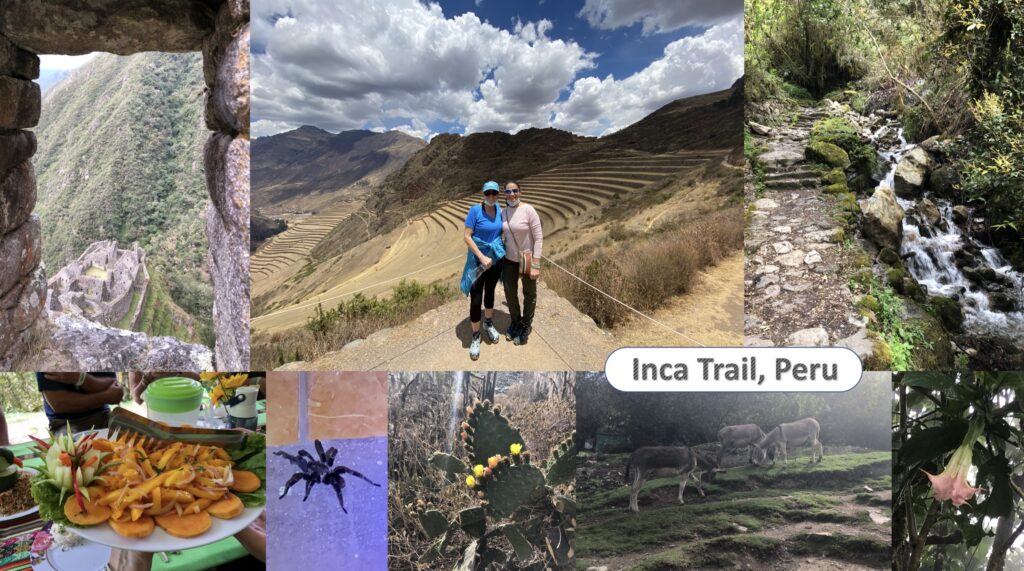 Despite all of these thoughts running through my head, I survived. I did gasp for breath but took more photos than anyone else because I stopped to take in my surroundings. I was slow but steady and arrived at camp whole and happy each evening, except when the toe of my shoe caught the step and sent me tumbling down stone steps. I don’t think I’ve seen that color purple in bruises before. Smiling and laughing took the place of sobbing, and my gear kept me dry in the downpours and shaded my fair skin from the sun. I applaud the thin sleeping pad that did save my back from complete agony. My muscles were sore but in a why-don’t-I-hike-more kind of way. The food was pleasingly on the edge of gourmet. The now welcomed coca leaf tea kept me warm since I didn’t bring enough layers. On a trip to the privy one evening, I made a deal with a tarantula that we would stay on our respective sides of the stall. Coach Brandon would have loved that. Overall, everything went well, but that didn’t mean it was easy. It was hard and NOT a vacation. It was what the brochure stated, an adventure trek. However, after much toil, Machu Picchu is a wonder to behold with its terraces and carefully constructed stone structures dating from the 1400s. Completely magnificent.
Despite all of these thoughts running through my head, I survived. I did gasp for breath but took more photos than anyone else because I stopped to take in my surroundings. I was slow but steady and arrived at camp whole and happy each evening, except when the toe of my shoe caught the step and sent me tumbling down stone steps. I don’t think I’ve seen that color purple in bruises before. Smiling and laughing took the place of sobbing, and my gear kept me dry in the downpours and shaded my fair skin from the sun. I applaud the thin sleeping pad that did save my back from complete agony. My muscles were sore but in a why-don’t-I-hike-more kind of way. The food was pleasingly on the edge of gourmet. The now welcomed coca leaf tea kept me warm since I didn’t bring enough layers. On a trip to the privy one evening, I made a deal with a tarantula that we would stay on our respective sides of the stall. Coach Brandon would have loved that. Overall, everything went well, but that didn’t mean it was easy. It was hard and NOT a vacation. It was what the brochure stated, an adventure trek. However, after much toil, Machu Picchu is a wonder to behold with its terraces and carefully constructed stone structures dating from the 1400s. Completely magnificent.
 After Peru, I thought I would be able to cross hike-something-big off my bucket list, but then my guide friend from college, Chris, offered to take me on a trek in Nepal this past December. He and his wife operate an adventure tour company (Far Xplorer) and spend much of the year in Nepal. Our trek would be the Khumbu Valley Trail towards Everest’s base camp. Not Everest itself. I am not altogether crazy. He said our walk would be mellow, with time to pause for tea, check out the local villages, and photograph the beautiful views. That sounded lovely. He was correct about the fascinating local culture and the stunning views, but the “walk,” as he called it, was a bit more challenging. I had flashbacks of Peru.
After Peru, I thought I would be able to cross hike-something-big off my bucket list, but then my guide friend from college, Chris, offered to take me on a trek in Nepal this past December. He and his wife operate an adventure tour company (Far Xplorer) and spend much of the year in Nepal. Our trek would be the Khumbu Valley Trail towards Everest’s base camp. Not Everest itself. I am not altogether crazy. He said our walk would be mellow, with time to pause for tea, check out the local villages, and photograph the beautiful views. That sounded lovely. He was correct about the fascinating local culture and the stunning views, but the “walk,” as he called it, was a bit more challenging. I had flashbacks of Peru.
I thought that I would be more prepared after my time in Peru. I was partly correct. I was excited to hear that we would stay in lodges and not sleep on the ground. I imagined hot showers and comfortable, warm beds after each day of hiking. However, the accommodations were not heated and some did not have hot water. Brrrr! We had a few hours of sunny weather and blue sky each day, but after that, it was cold. Cold like see-your-breath, -4 degrees cold. Because of this, we didn’t hike as far as the Everest base camp. The lodges decided to close because of the cold weather (frozen pipes and all that). We heard it was -17 degrees at base camp, and some folks were taking helicopters.
 My 56 mile adventure was incredible despite getting a terrible cold and expending thousands of calories trying to keep warm. The locals were friendly and willing to help as much as possible for us to feel welcome. The meals, mostly ramen vegetable soups, were delicious, and the lemon honey tea aided with my cold. Both helped keep me warm.
My 56 mile adventure was incredible despite getting a terrible cold and expending thousands of calories trying to keep warm. The locals were friendly and willing to help as much as possible for us to feel welcome. The meals, mostly ramen vegetable soups, were delicious, and the lemon honey tea aided with my cold. Both helped keep me warm.
There were no tarantulas on this trip, but I took photos of rabbits, goats, cows, mules, sheep, birds, dogs, and cats, and the yaks were gorgeous. I also snapped footage of stupas, crazy Kathmandu traffic, an outside crematorium, prayer wheels, and the breathtaking scenery, including Everest. I can’t believe the grandeur of the Himalayas.
 Similar to our fitness journeys, there are always many obstacles when traveling that can lead to surprising comprehension. Due to an issue with my visa for India, I had to stay in Paris for a day. I had a glorious time visiting the Eiffel Tower and the Louvre and savoring a few French pastries. True heaven! Then on the way home from Nepal, I was sidetracked in India for a couple of days. I understand why the Taj Mahal is one of the world’s seven wonders. It’s romantically extraordinary in size, art, and architecture. It was an enjoyable way to end an arduous journey.
Similar to our fitness journeys, there are always many obstacles when traveling that can lead to surprising comprehension. Due to an issue with my visa for India, I had to stay in Paris for a day. I had a glorious time visiting the Eiffel Tower and the Louvre and savoring a few French pastries. True heaven! Then on the way home from Nepal, I was sidetracked in India for a couple of days. I understand why the Taj Mahal is one of the world’s seven wonders. It’s romantically extraordinary in size, art, and architecture. It was an enjoyable way to end an arduous journey.
 I share my hiking stories because I think it’s crucial to fold opportunities for exercise (mental and physical) into the pockets of the soul through experiences that entice human growth in character. Someone I greatly admire, Coach Beth of Beth Feraco Fitness says, “We can do hard things.” There were moments on all three of my hefty treks when I questioned whether I could take another step, stop shivering, drink enough water, eat new food, etc. Even though I did not prepare physically in any way for these adventures other than my haphazard exercise routine, I was fit enough to make it happen. I have memories of incredible places where I learned a lot along the way, not only about the places I visited but also about myself. I learned about things that I need to do better (more fresh air & a steadfast commitment to an exercise regime), things that I need to let go of (tasks that don’t matter in the big picture), and things I need to cherish more in my everyday life (family, friends, experiences).
I share my hiking stories because I think it’s crucial to fold opportunities for exercise (mental and physical) into the pockets of the soul through experiences that entice human growth in character. Someone I greatly admire, Coach Beth of Beth Feraco Fitness says, “We can do hard things.” There were moments on all three of my hefty treks when I questioned whether I could take another step, stop shivering, drink enough water, eat new food, etc. Even though I did not prepare physically in any way for these adventures other than my haphazard exercise routine, I was fit enough to make it happen. I have memories of incredible places where I learned a lot along the way, not only about the places I visited but also about myself. I learned about things that I need to do better (more fresh air & a steadfast commitment to an exercise regime), things that I need to let go of (tasks that don’t matter in the big picture), and things I need to cherish more in my everyday life (family, friends, experiences).
I am moving forward with yet another deep appreciation for different people and places. However, I can say with conviction that I am crossing hike-something-big off my bucket list. Done, done, and done because I am NOT a hiker!


Cathy grew up in NH surrounded by a large, loving family, where she learned generosity and hard work. She now models that for her two children. She was inspired to become a fitness coach when searching for ways to become more healthy herself after a life-threatening illness.
November 22, 2022
I Don’t Hike by Coach Cathy
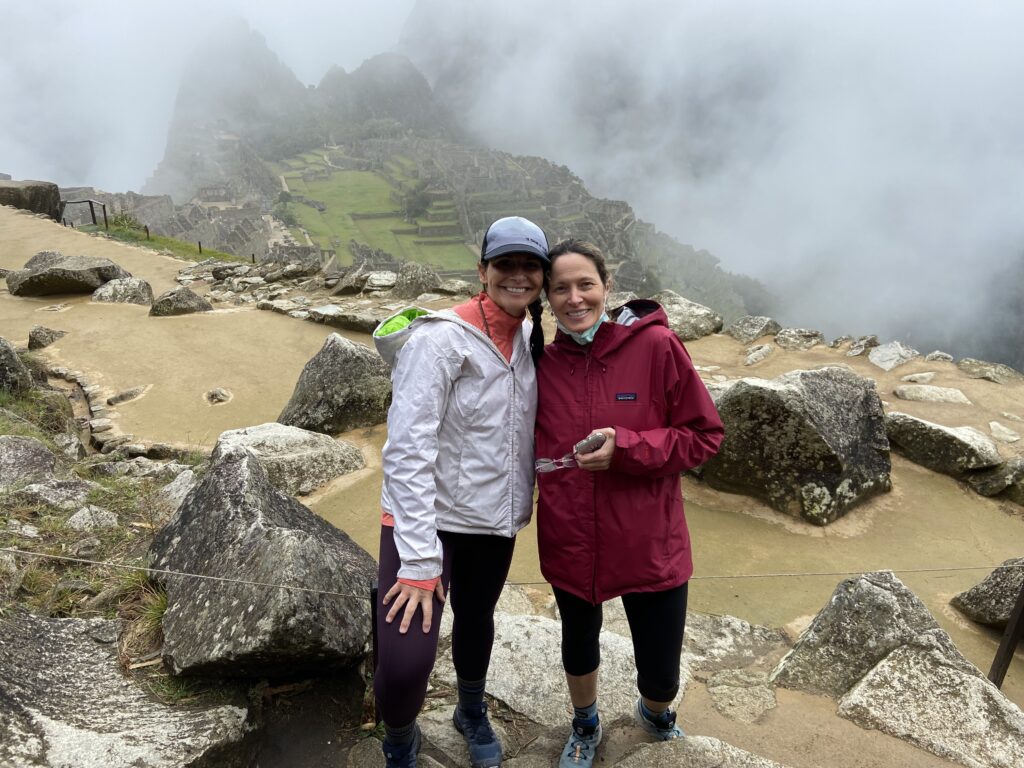 Last fall, I set out for a two-week adventure of a lifetime! I was officially in my fifties and felt there was no time like the present to push my boundaries and step outside of my comfort zone. You know, physical exertion, mental mind-bending, temperature changes, in-your-face nature, potentially suspicious food, and anything that makes you wonder later why you agreed to be that uncomfortable in every way.
Last fall, I set out for a two-week adventure of a lifetime! I was officially in my fifties and felt there was no time like the present to push my boundaries and step outside of my comfort zone. You know, physical exertion, mental mind-bending, temperature changes, in-your-face nature, potentially suspicious food, and anything that makes you wonder later why you agreed to be that uncomfortable in every way.
After months of planning, prepping, and purchasing the needed gear, I was hesitant, to say the least, because I was about to hike 26 miles to get to Machu Picchu in Peru. You see, I don’t hike. Ever. I live at sea level in a beautiful place with many easily accessible hiking spots, but I don’t hike. No excuses. I sort of like hiking. I mean, I like the idea of hiking. I don’t ever make it happen.
What do you do when you are about to push your limits? You lean on a friend, right? Surround yourself with support and inspiration, which is one of the things I love about Hybrid Fitness. In my case, one of my grade school besties, Tammy, was going with me. Tam is the epitome of a spirited go-getter. Just what I needed! After 45 years, Tam knows me inside and out and has my back. However, she hikes. Like really hikes. Like all-the-mountains-in-New-England-every-weekend hikes. She was beyond ecstatic about this adventure.
I love to travel and have been all over the world. As I get older, I am less willing to suffer for the experience. I envisioned myself trudging along, far behind my friend if I wasn’t sitting on rocks or the wet ground, gasping for breath and sobbing periodically. Later wringing the sweat out of my clothes when we finally reached our nightly campsite only to find in the morning that my muscles would be so sore I’d have to forever live on the mountain in Peru with the alpacas for company.
I am a Hybrid Fitness Coach. Coach is the keyword. I help others get the exercise they need. In the past, I wasn’t as consistent with my exercise schedule. My nutrition was inadequate, at best. I tended to overschedule myself and skip meals. Once I realized what I had signed up for with this moderate-level Sacred Valley quest, I questioned whether I was fit enough to check this off the bucket list.
I have not been backcountry tent camping since b.k. (before kids). I was worried about my back after lying on the ground all night. I imagined tripping on the rock-strewn jaunt to the makeshift bathroom in the middle of the night in the blackest of black darkness. The temperature was a concern because I could only carry so much in my pack. Freezing after sweating in the cold weather from the exertion had me thinking there could be a possibility of never being warm again. I had no concept of what the food and drink would be like, including coca leaf tea, sacred to the Incas, which has enough caffeine to ignite my heart into a full gallop giving a whole new meaning to Elvis’s Burning Love. I was purposely not pondering the chances for any up close and personal conversations with unexpected critters as we intruded into their living spaces.
Despite all of these thoughts running through my head, I did gasp for breath but took more photos than anyone else because I stopped to take in my surroundings. I was slow but steady and arrived at camp whole and happy each evening, except when the toe of my shoe caught the step and sent me tumbling down stone steps. I don’t think I’ve seen that color purple in a bruise before. Sobbing was non-existent, smiling and laughing taking its place. My gear kept me dry in the downpours and shaded my fair skin from the sun. The thin sleeping pad did save my back from complete agony. My muscles were sore but in a why-don’t-I-hike-more kind of way. The food was pleasingly on the edge of gourmet with the now welcomed coca leaf tea because I didn’t bring enough layers for the evenings and needed the warmth. On a trip to the privy one evening, I made a deal with a tarantula to stay on our respective sides of the stall. Coach Brandon would have loved that. Overall, everything went well, but that didn’t mean it was easy. It was hard. Definitely not a vacation. It was what the brochure stated, an adventure hike.
As Coach Beth of Beth Feraco Fitness says, we can do hard things. We certainly can because I have signed up to hike in Nepal for two weeks in December. No, not Everest. I am not that crazy. As you probably know by now, I hate being cold, but I will be able to see Everest from my hike. I am going with a friend from college who runs adventure tours (Far Xplorer) in Nepal. Far Xplorer supports organizations that install clean drinking water in villages. Incredibly cool all the way around.
To prepare for this adventure, I have scheduled myself more time to be consistent in my workouts and not skip meals by doing some food prep. Sure, I’ve gained a few pounds with the increase in calories but, I feel better, heartier, stronger, and more prepared this time.
Wish me luck and stay tuned.
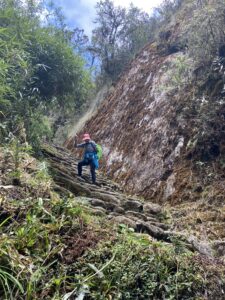
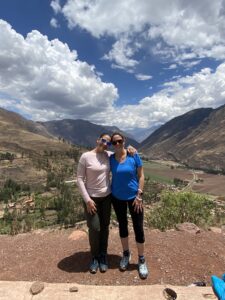







Cathy grew up in NH surrounded by a large, loving family, where she learned generosity and hard work. She now models that for her two children. She was inspired to become a fitness coach when searching for ways to become more healthy herself after a life-threatening illness.
June 8, 2021
Top Beginner Boxing Mistakes!
5 TOP BEGINNER MISTAKES WHEN BOXING!
If you’re new to boxing, or you just want to clean up your form and prevent yourself from injury, then this article is for you!
I’ve taught beginners boxing for several years now, and I see the same small mistakes with almost everyone. When punching a 70-100lb bag, form is very important. Proper form and technique ensure that you don’t injure yourself, and you get the most out of your workout.
Let’s take a look at the top 5 beginner mistakes when boxing!
MISTAKE #1: OVEREXTENDING THE ELBOWS!
One of the leading causes of injury in boxing comes from hyperextending the elbows when throwing punches. This often comes from misjudging your distance between yourself and the bag you’re using, or just downright improper punching technique.
Always make sure you’re close enough to the bag (or opponent) so that you can hit them with a fully extended jab. Using the jab to assess distance is ideal because if you can hit the target with the extended jab, you’re at a good distance to land all the rest of the punches.
Another common issue is punching with a chopping motion rather than punching straight forwards. A good way to work on this is to imagine punching through a pipe. The punch will have to go straight forwards through the pipe to miss the sides, and will help throw straighter punches.
Make sure to fully extend your punches, as well. Failure to do this will result in far less power/force.
MISTAKE #2: NOT SNAPPING THE PUNCHES BACK AND DROPPING THE HANDS!
Another mistake I see all the time is throwing punches forwards, and letting them linger out in front. Every punch should be snapped back to the chin right after it’s thrown, as fast as possible. The motion is very similar to that of whipping a towel.. Throw the punch forward, and immediately snap it right back.
This increases the power of the punch, helps make your technique more efficient (getting the punches back quickly is important so you can throw them again if needed), and is also very important for defense. The longer your arm stays extended, the more time your opponent has to come in with a punch to your face/head which is vulnerable.
Always snap the punches back to the chin. Also, if your fist isn’t throwing a punch then it should be besides the chin protecting the head. Oftentimes, I see dropped fists after punches or while slipping. Never let your hands drop down and always bring them right back to that defensive position.
MISTAKE #3: NOT TURNING THE HIPS OR USING THE CORE!
In regards to punching, the majority of your power is generated from the hips. It’s crucial to turn your hips and transfer your weight around to get a lot of power through your punches, and to have efficient technique (especially with the cross and hooks).
When you’re throwing punches, make sure to rotate through your shoulders, AND hips, as well.
This is where hooks can be awkward punches to master at first. I like to think of your core and torso as a spring. When you’re throwing the hook you want to almost load the spring before coming back around. Load the spring by rotating slightly to the opposite direction of the punch, then use the momentum through your core rotating back to add power to the punch.
This is easier and more effective if you throw the hook after another punch that already sets you up in that position (i.e. throwing a 2, then coming back around with a 3).
MISTAKE #4: FEET CROSSING OVER WHEN MOVING AROUND!
Crossing your feet over one another is never a good idea!. It throws you off balance, and makes you very easy to push over.
You should start a move to any direction with the foot that’s closest to that direction. For example, if you’re a righty and set up in an orthodox stance (left foot out in front, right in back) and you want to move to the left, start by stepping to the left with your left foot then follow with the right.
Opposite to the right, start with the right foot which is already closer to that direction then follow through with the left foot. Moving forwards should always start with the front foot and backwards should start with the back foot.
MISTAKE #5: BREATHING INCORRECTLY!!
Lastly, I want to talk about something I see most often and commonly overlooked, but is incredibly important. Holding your breath should NEVER happen. Holding your breath through a punch, or through a series of punches is never a good idea.
This will make you winded very quickly. Not something you want to happen in a real fight, or even in a 45 minute class where you throw a TON of punches. Conserving your energy should be one of your top priorities.. You should take quick, small breaths with EVERY punch. This way you’re constantly moving air so you don’t get tired too quickly and it also helps with adding power to the punches. You have deep core muscles that only contract when you forcibly exhale so if you want to use your core to its highest potential…. BREATHE!
Now that you’re aware of some of the top mistakes beginners make when just starting off in boxing, it’s time to get to work! Fixing these up early on is very important. If you can master these 5 key issues with boxing early on, your boxing journey will be much more rewarding.
You’ll be significantly less likely to injure yourself, and you will have the tools to develop great boxing techniques and will solidify them throughout your experience. It’s much better to master the basics early rather than later when you’ve practiced the incorrect way for so long that it’ll take forever to unlearn everything, then retrain. Now that you know these 5 top beginner boxing mistakes and how to correct them, practice, practice, and practice some more, and I look forward to seeing you in boxing class!!
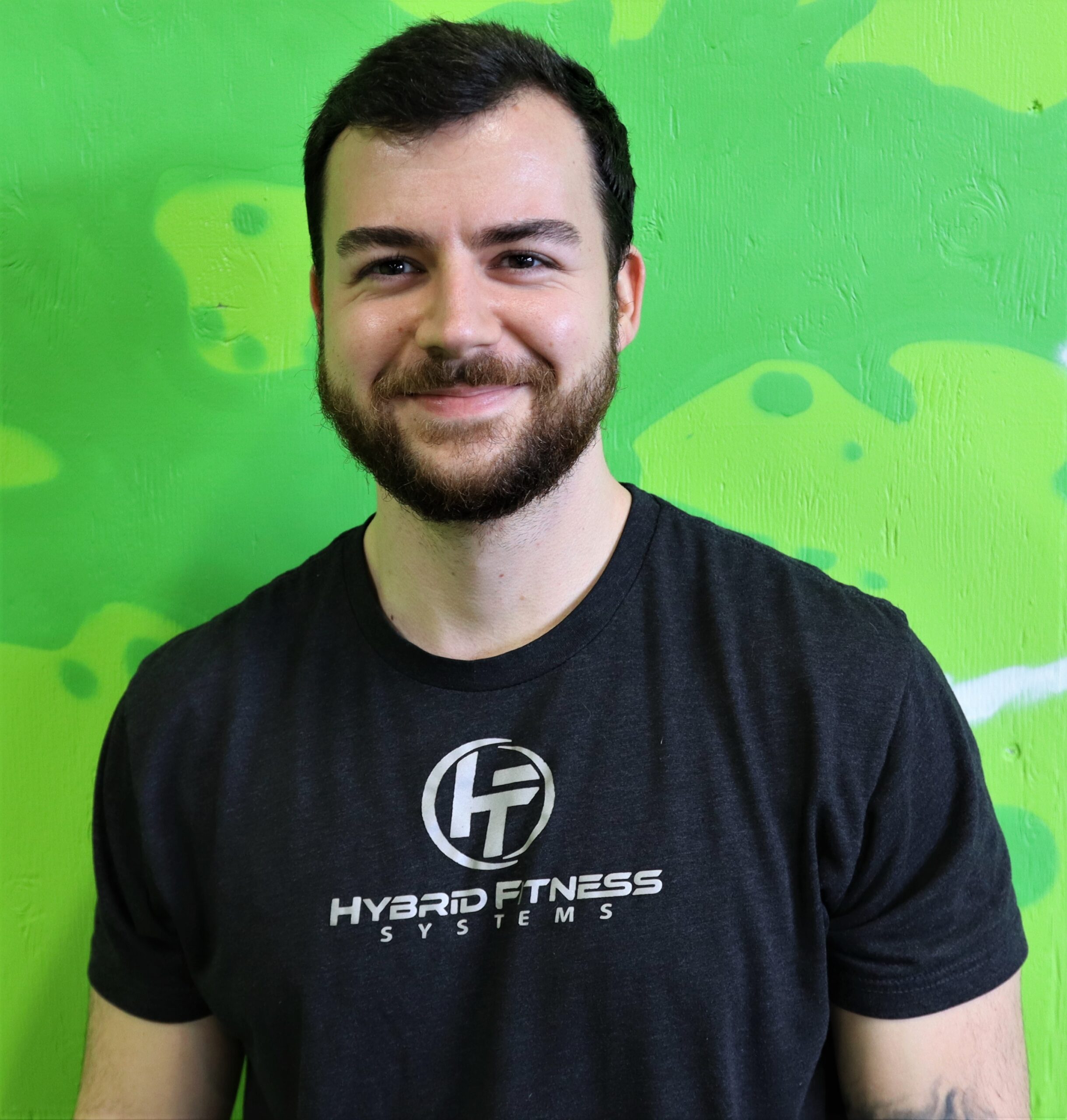
Mike grew up as a multi-sport athlete and received his Bachelors in Kinesiology (Exercise Science) and also received his Personal Training Certification from the American Council of Sports Medicine.
Mike has worked with a wide range of ages and abilities and is an expert at working around injuries and helping those individuals reach their health goals.
In his time in college, he also worked with D1 Athletes (specifically the UMASS Amherst Men and Women’s Basketball teams) helping them get stronger, faster, and more athletic.
April 22, 2021
Boxing Basics: Knowing Your Punches!
You’ve learned how to wrap your wrists to protect your hands, you’ve learned about setting up your boxing stance and you saw the video about how our Hybrid boxing class works… As you’re walking into your first class, you see all these stations with random numbers and have no idea what they mean. This article is going to dive into the 6 main boxing punches and how they’re integrated into each station we offer here.
Left Handed vs Right Handed
There are 6 basic punches we use in boxing class here at Hybrid. Each punch corresponds with a number and each station has a combination of those numbers to form a boxing combo you use to workout with.
If you’re right handed, any odd numbered punches are thrown with your left hand. Even numbered punches are thrown with the right.
If you’re left handed, any odd numbered punches are thrown with your right hand. Even numbered punches are thrown with the left.
Think about your non-dominant hand matching up with odd numbered punches. Dominant hand matches up with any of the even numbered punches.
The Punches
1- The Jab
The jab is a light punch that will be thrown with the non-dominant hand. It’s the first of the punches that are straight out and should be lighter.
2- The Cross
Next is the cross! A powerful punch that is thrown with the dominant hand and the second punch that is thrown straight out.
(Straight out punches are quick and need to be snapped back to the chin after. Kind of like a towel whip)
3- Non-Dominant Hook
This punch is thrown with the non-dominant hand and comes in from the side. Think about cutting the bag completely horizontally. Elbow & forearm stay parallel to the ground. Palm face down or face in towards yourself (whichever feels better to you, doesn’t make a big difference)
4- Dominant Hook
This punch is thrown with the dominant hand and comes in from the side (same as above).
5- Non-Dominant Uppercut
This punch is thrown with the non-dominant hand and is thrown straight upwards. Elbow/forearm should be perpendicular to the ground. You can get underneath the bag with our wrecking ball bag (Station 3) but if you’re throwing an uppercut on a regular heavy bag, think about cutting the bag diagonally from low to high.
6- Dominant Uppercut
This punch is the same as above except with the dominant side.
Four Things To Watch Out For When Throwing A Punch!
-No hyperextended elbows!! Also, always assess your distance from the bag before you throw a punch.
-Make sure to keep wrists tight and don’t let them extend when making contact with the bag.
-Step in to get underneath the wrecking ball bag.
-Make sure to take a short quick breath every time you punch so you don’t get winded!
Practicing these 6 punches, and using the combinations of them will help you remember which number matches up with which punch. Shadowboxing, or boxing and throwing the punches in the air (not on a bag) is a great way to practice the punches and help memorize them. Now the more you practice them, the easier they will flow and once you’ve mastered the six basic punches you can start to work on adding more power to your punches, harder combinations and adding things like kicking in!
Check out all of our other boxing, fitness, and health articles here!
Check out our YouTube channel here!
And remember….
Small Steps, Big Results!

Mike grew up as a multi-sport athlete and received his Bachelors in Kinesiology (Exercise Science) and also received his Personal Training Certification from the American Council of Sports Medicine.
Mike has worked with a wide range of ages and abilities and is an expert at working around injuries and helping those individuals reach their health goals.
In his time in college, he also worked with D1 Athletes (specifically the UMASS Amherst Men and Women’s Basketball teams) helping them get stronger, faster, and more athletic.
April 2, 2021
Ideas for Relaxation to Use Anywhere
Incorporating ideas for relaxation in your busy life is simple.
How many times have you heard someone say that they just want to chill out and relax? Why do we crave relaxation? Because, when we are relaxed we feel calm, well, mentally settled, and comfortable. Keep reading to find out how you can be relaxed in your daily life.
The Benefits of Relaxation
The benefits of relaxation go above and beyond just being comfortable. Moments of relaxation in our fast-paced world actually make us healthier humans.
Just to name a few, relaxation has physical and mental benefits for your whole being by:
- Lowering blood pressure & heart rate
- Decreasing anxiety
- Aiding digestion
- Brightening your mood
- Reducing aches and pains
- Improving concentration
- Enhancing sleep
- Reducing negative feelings (anger, frustration)
Let’s move on to find out how to apply ideas for relaxation to your life to get these benefits.
Exercise!
As a matter of fact, you do not have to become an athlete to reap the relaxation benefits of exercise. To begin with, simply moving your body in some way every day will get you in the groove of relaxation. Exercise can be low- or high-impact depending on what creates that feeling of relaxation for you.
Examples of aerobic and anaerobic exercise to reach a state of relaxation are:
- Walking – Preferably outside, but even around your house or up and down stairs works
- Biking – Preferably outside, but a stationary bike gets the job done, too
- Dancing – In your living room, while washing dishes, anywhere, just shake it!
- Yoga – All you need is a mat and an app with follow along guidance
- Tai chi – Google ‘tai chi for beginners’ and choose a video to follow
- Qigong – Google to find a video that calls to you
- Pilates – Start with a mat class or join a Pilates studio to use equipment
- Stretching – Check out theflexibilityguru.com, Hilery Hutchinson and her 10-minute stretching book
If attending a class in person is not your thing right now, have no fear. The web is exploding with fitness classes to fit anyone’s preference.
You can choose a previously recorded program to practice whenever you choose, or a live practice where you interact with instructors and participants in real time. Furthermore, being part of a community online or in person will encourage you to stay consistent in keeping this idea of relaxation in your daily life.
Tense and Release
Another technique to activate your muscles is progressive muscle relaxation. It’s a practice involving tensing muscle groups, and then releasing the tension by relaxing the muscles.
Here is how you can use the tense and release technique:
- Start from your toes, move to your calves, then your thighs, working your way up to your head. Don’t forget your face!
- By focusing on each muscle group individually, it is easier for you to target areas that may be more tense or sore than others.
- Tense for 5 seconds
- Relax for 30 seconds
- Repeat
While this idea for relaxation is easy, in order for any relaxation technique to work fully you must be MINDFUL.
What does being mindful have to do with relaxation?
Being mindful is a mental state of being consciously aware of what is happening in the present moment.
Mindfulness is created by focusing on, calmly acknowledging and accepting:
- How you are feeling
- What you are thinking
- Physical sensations of your body
Focusing on your breath is one way to create mindfulness, because you are paying attention to what is happening to your body as you breathe. This focus makes it easier to notice if you have shallow breathing, if you are holding your breath, or if your breathing is faster than normal.
Breathe!
Yes, breathe to relax your body. It’s that simple. Believe it or not, a lot of us do not breathe fully, especially when stress is present. If we are not mindful of our breathing we tend to hold our breath or take shallow breaths.
Options to release stress, relax muscles and cleanse your body with essential oxygen are:
- Focusing on taking slow, deep breaths for a few minutes, a few times per day. Be it in the car, washing dishes, folding laundry, raking leaves, etc.
- Using a square breathing technique where you inhale to the count of 4 (or whatever # works for you), hold for a count of 4, exhale to the count of 4, hold for a count of 4, and repeat for a few minutes.
- Breathing from your diaphragm by placing your hand on your abdomen and taking slow, deep inhales focusing on your abdomen expanding followed by a longer exhale. This stimulates your parasympathetic nervous system to calm your body and reduce your heart rate and blood pressure.
- Meditating while focusing only on your breath by being mindful of the oxygen entering your body and the carbon dioxide leaving your body. Closing your eyes can help keep the focus on your breath.
Transferring this mindful practice to other things in your life by focusing on one thing at a time will make it easier to be present in the moment instead of allowing your mind to be scattered.
Need a visual to be mindfully present?
Use your imagination. Yes, the game of pretend from when you were young.
Envision calm and serene images. Many people find it helpful to include nature in their visualizations.
Ideas to consider are:
- Sitting in a comfortable lounge chair on the beach with the sun shining and the temperature is perfect. Watch a wave swelling toward the shore as you inhale expanding your abdomen and every time you exhale imagine the wave breaking slowly across the shore.
- Gently swinging in a hammock on a fall day with the leaves floating down around you. With each sway of the hammock your body is sinking deeper into relaxation as you inhale and exhale.
- Hiking on a trail in the woods meandering between the trees, hearing the birds chirping, the squirrels chattering and the sun’s rays peeking through the leaves and branches.
- Choosing your favorite place surrounded by all the things that make you feel calm, happy, and whole. Wherever that may be, how do you feel when you are in your favorite place?
You can have a lot of fun with these ideas for relaxation because you can let your imagination run wild and transport yourself anywhere.
Relaxation made easy
There’s an app for that! Consider choosing from the plethora of apps for download, free and otherwise, that provide ideas for relaxation. They offer everything from listening to music or nature sounds to hearing a voice guiding you by story or through visualization and much more.
A few internet favorites are:
- Calm
- 10% Happier
- Insight Timer
- Headspace
It is easy to see that these apps take the thinking out of the practice allowing you to just follow along.
To Recap
Practicing these ideas for relaxation will:
- Keep your mental state balanced
- Keep you physically fit
- Improve your inclination to see the bright side
- Manage your fight-or-flight response in stressful situations
In short, the trick is to choose a relaxation technique that works for you, and not one that will add to your stress by trying to accomplish it in your busy day. Consequently, you may have to try a few to find the one that works easily.
If you enjoyed this article please check out other helpful articles by our coaches here:
Hybrid Fitness You Tube Channel
Remember…small steps, big results.

Cathy grew up in NH surrounded by a large, loving family, where she learned generosity and hard work. She now models that for her two children. She was inspired to become a fitness coach when searching for ways to become more healthy herself after a life-threatening illness.


